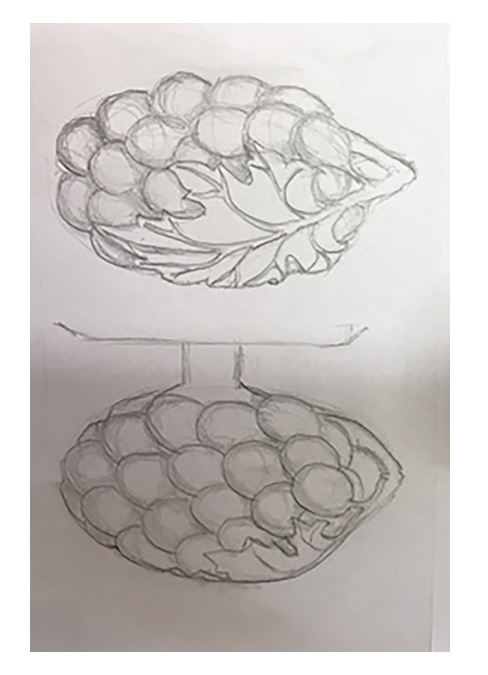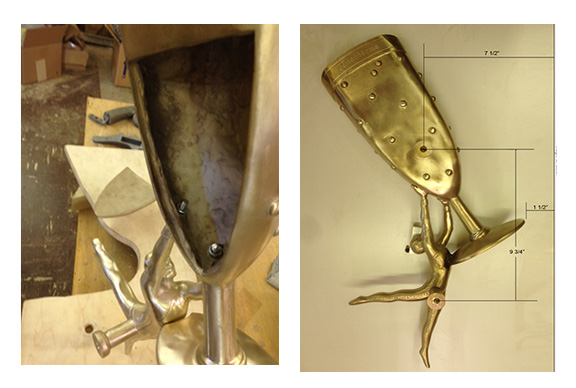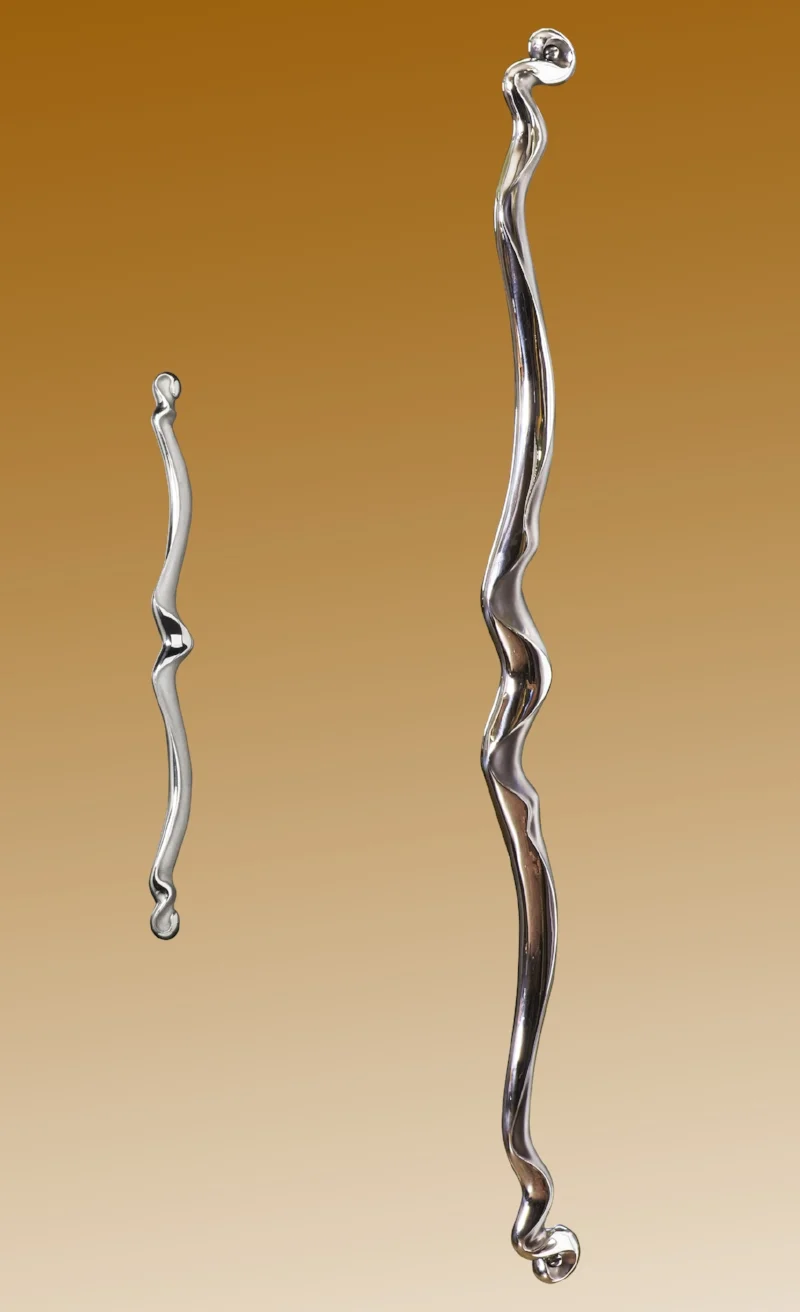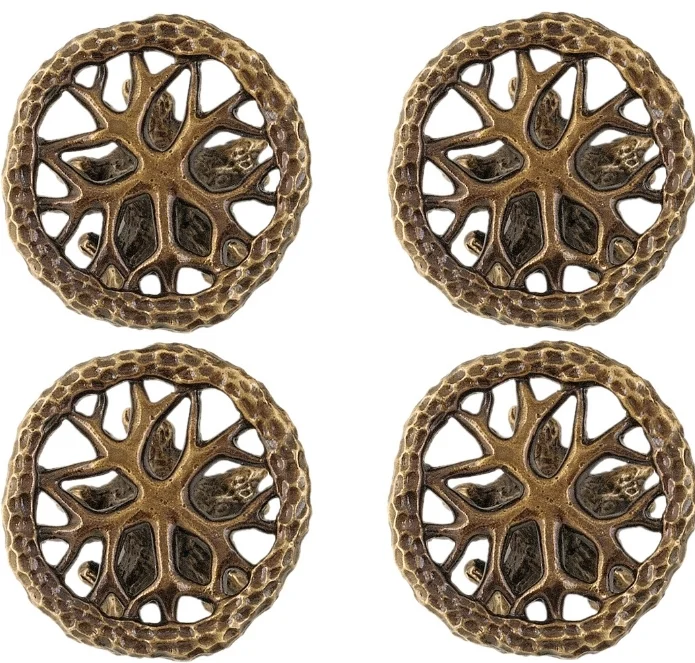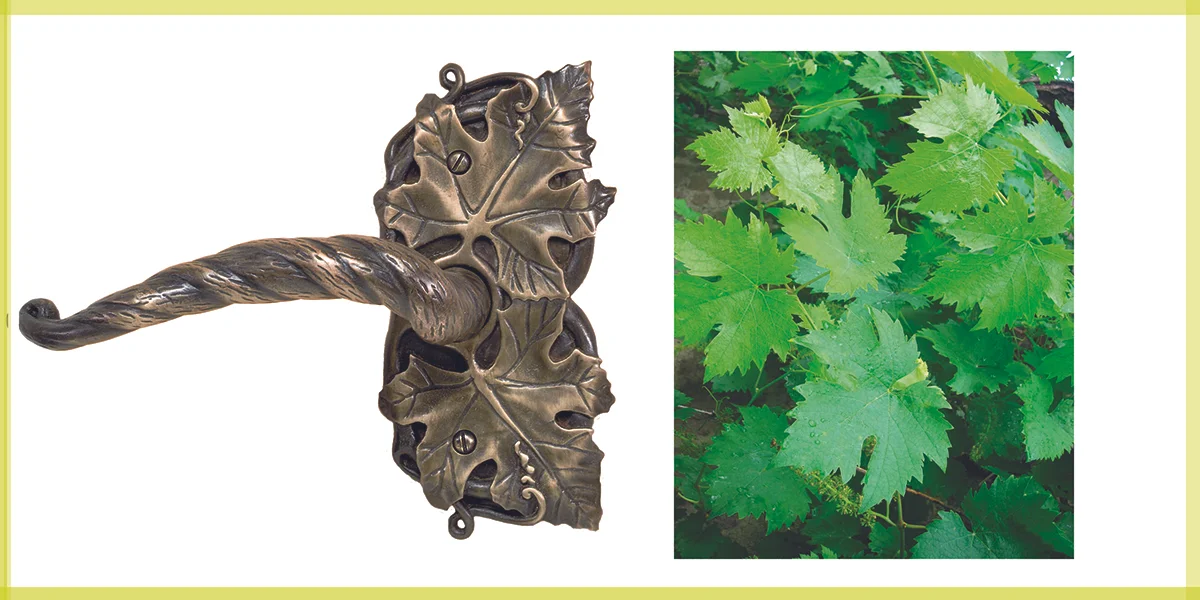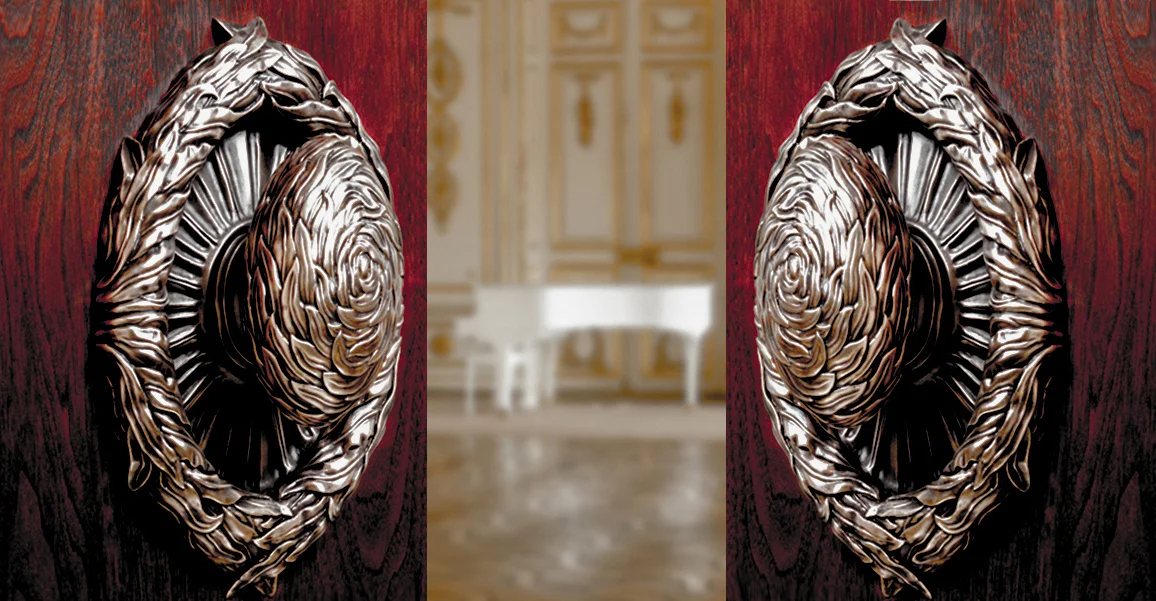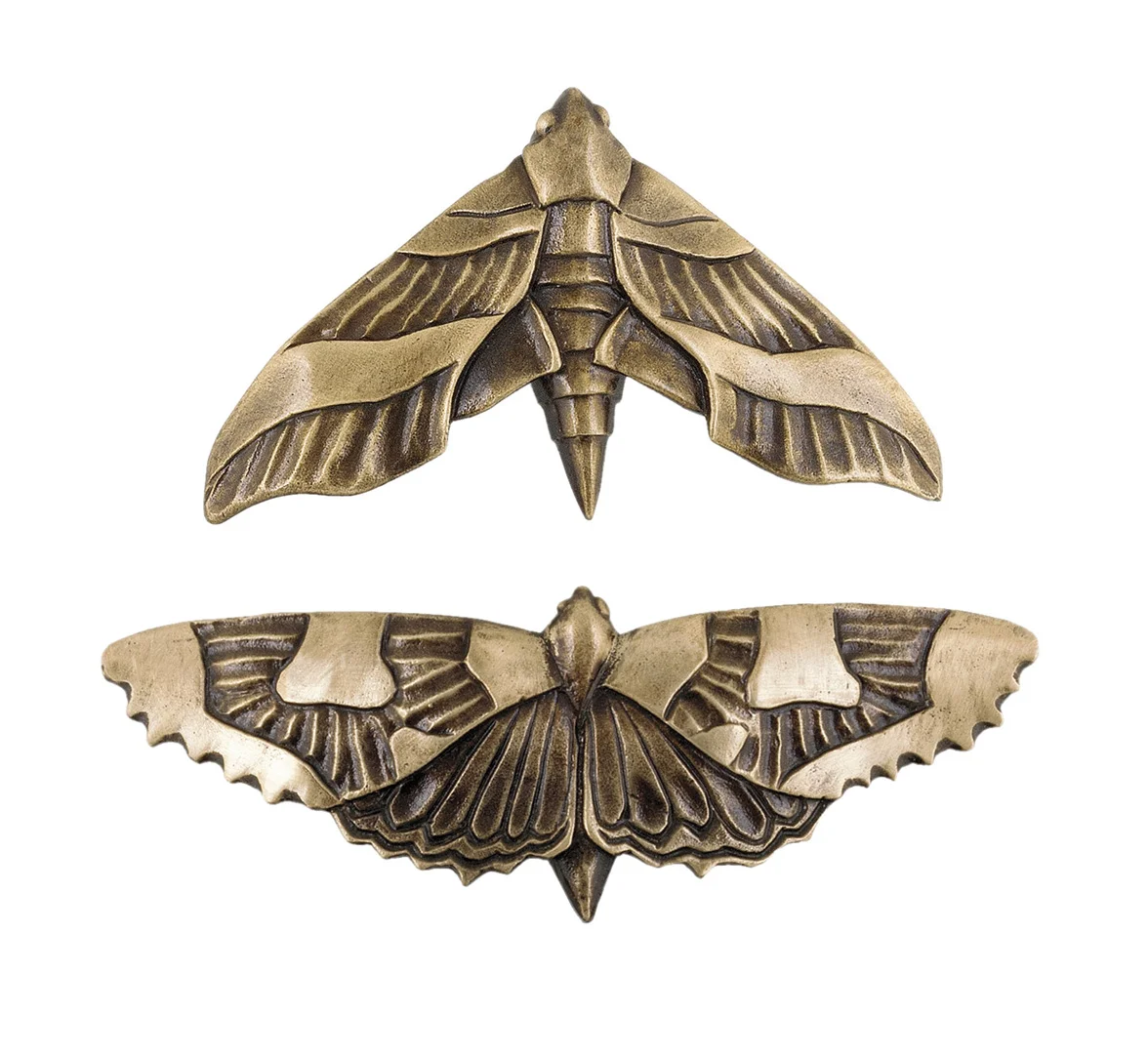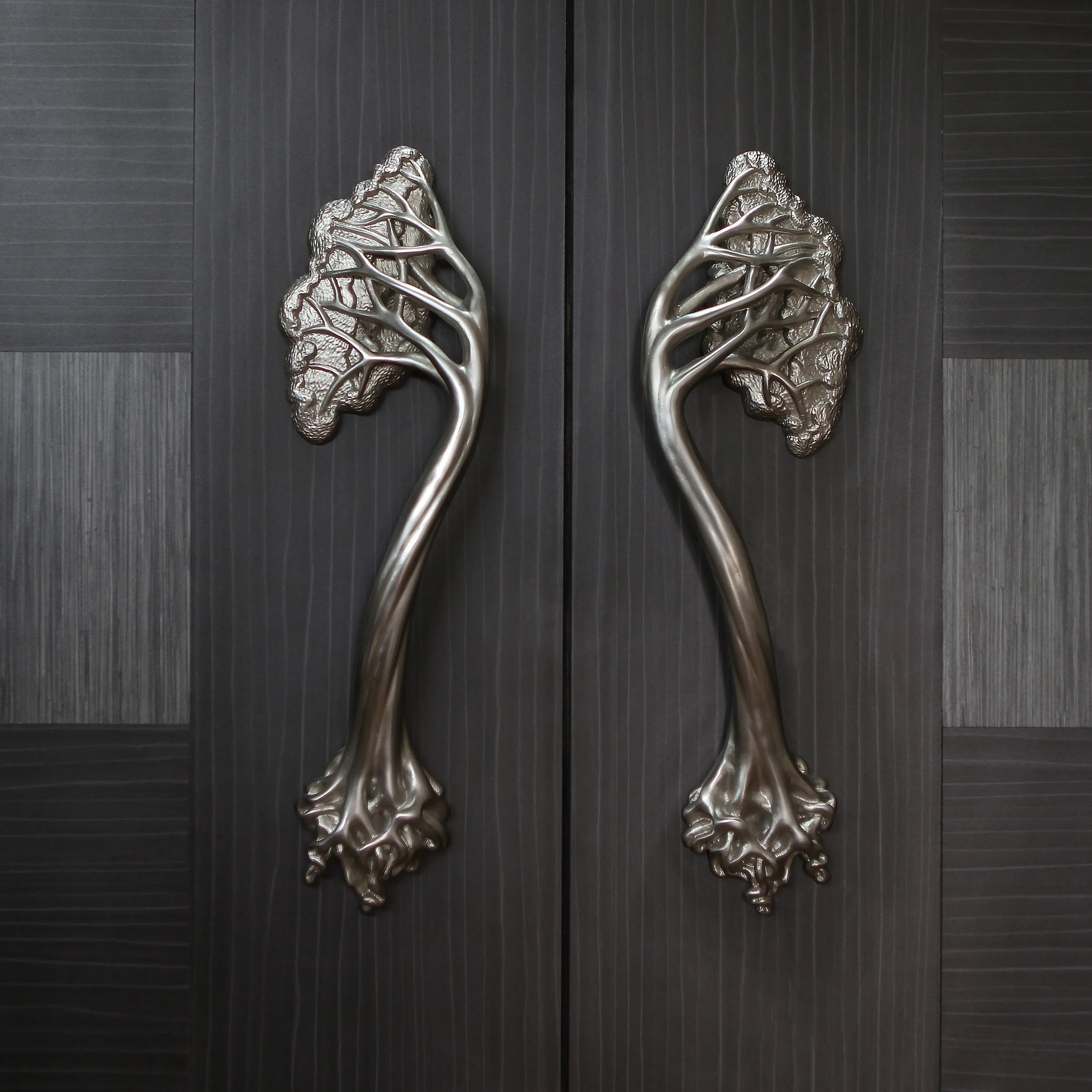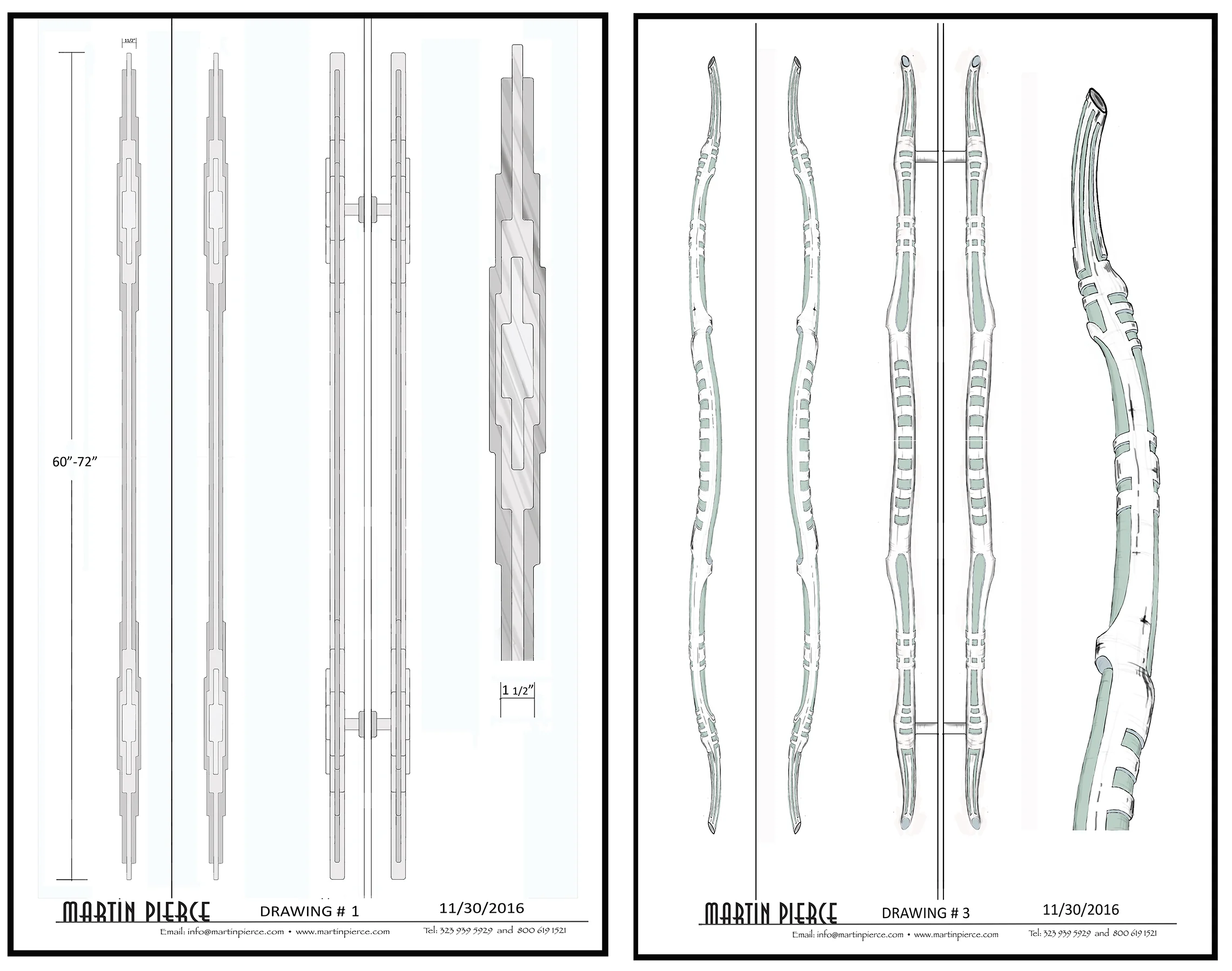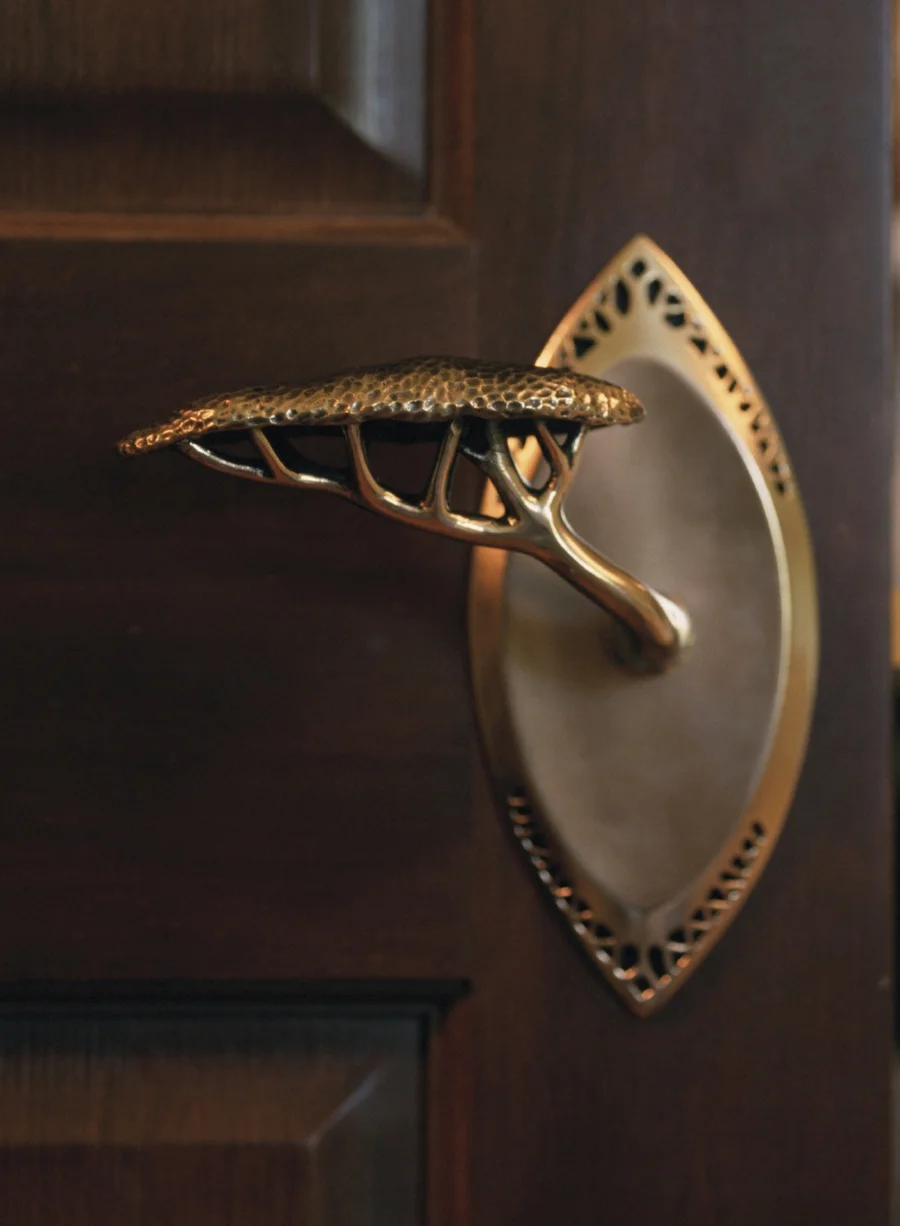The creative process is as unique and unfathomable as the brain it resides in. When I have listened to authors and composers answering the question of where and how they get their inspiration there appears to be a myriad of sources. The same holds true when it comes to designing door hardware and Martin Pierce’s designs reflect the eclectic nature of his source material ranging from oceanic shapes to tree bark and bird wings to name just a few.
As a result, Martin always has a sketch book on hand to doodle in his designs as they occur to him but a large number of his designs also come from a more structured and practical need either to develop additional pieces for a popular collection or to meet a designer’s need for a specific project.
Not all of the designs make it off the drawing board and indeed I would hazard a guess that less than 10% make the leap. When designing a new piece there can be as many as 4 or more alternatives that materialize on paper and if the project is commissioned by a designer then alternative concepts can be useful in hammering out practical site issues or scale questions.
We keep all of these sketches as source material for future designs and this is how I came across some of the leaf designs shown here. The Willow door pull came from a need to create a flush pull and resulted in 3 designs one of which is currently in used in Willow collection.
The leaf hinge design is still in the design stage where it will remain until we have sufficient hinge designs to complement our other collections.
The Vine collection is a popular series and the new leaf and grape design shown here is already taking shape as a sculpted wooden pattern.



